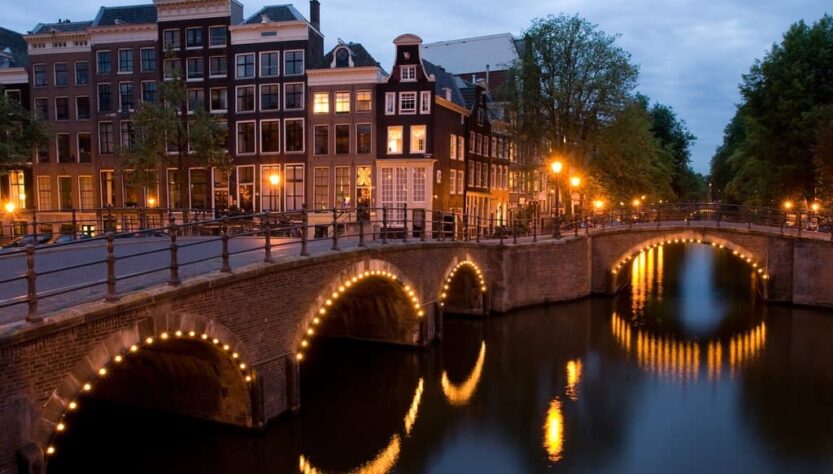Some cities are so closely tied to the films they appear in that they become more than just a backdrop — they turn into full-fledged characters. Their streets, architecture, atmosphere, and even climate help shape the plot, set the tone, and become as memorable as the main protagonists. For many travelers, cinema becomes an inspiration: to see Paris through Amélie’s eyes, walk through New York like Woody Allen’s characters, or get lost in the alleys of Tokyo alongside Scarlett Johansson. In this article, we’ll embark on a cinematic journey through the most iconic cities that have become inseparable from great filmmaking.
Paris: Romance on Screen
Paris is a city where films aren’t just made — they’re declarations of love. Its bridges, cobbled streets, old cafés, and elegant facades seem tailor-made to tell stories of love, encounters, and farewells. Among the most memorable films is Amélie by Jean-Pierre Jeunet, where Montmartre is portrayed as a magical place with a warm soul. Woody Allen’s Midnight in Paris transports viewers not only to the city itself but to its golden age of art and literature. This Paris is full of glowing street lamps, morning baguettes, and a unique French melancholy.
New York: A City of Contrasts
The city that never sleeps has hosted countless plots — from gangster dramas to romantic comedies. New York on screen is both the bustling Manhattan with its skyscrapers and the cozy Brooklyn, with Central Park adding its own cinematic magic. One of the most iconic films is Breakfast at Tiffany’s, where Audrey Hepburn forever immortalized Fifth Avenue in cinematic history. In When Harry Met Sally, the city becomes the backdrop for a sincere story of love and friendship set against autumn streets. For superhero fans, New York is home to Spider-Man and the battlefield of the Avengers.
Tokyo: Between Neon and Solitude
Japan’s capital, blending ancient culture with futuristic architecture, often serves as a setting for cinematic reflections on identity, belonging, and loneliness. Sofia Coppola’s Lost in Translation shows Tokyo through the eyes of a Western visitor — slightly detached, but with deep respect and awe. The neon lights of Shibuya, the rhythm of the streets, the nighttime silence of the hotel — all create a unique portrait of a city that speaks without words. In the animated masterpiece Your Name, the metropolis becomes a space where magic is possible and time bends to emotion.
Venice: Mystery on the Water
With its canals, gondolas, and masks, Venice has always seemed otherworldly. In cinema, it often serves as a backdrop for drama and mystery. One striking example is The Talented Mr. Ripley, where the aesthetics of the Italian streets intertwine with psychological tension. In The Tourist, starring Johnny Depp and Angelina Jolie, Venice becomes the stage for a tangled story full of deception and allure. Even in James Bond films, the city reveals its contrasts — from luxury to danger, from daytime openness to nighttime secrecy.
London: Atmosphere of Fog and Intrigue
The English capital has always been ideal for stories of spies, detectives, and intellectual games. London in films includes the classic Baker Street with Sherlock Holmes, the iconic facade of Big Ben, and the dark alleys of the East End. In the Harry Potter films, London is the gateway to a magical world, while in Notting Hill it’s a place where a celebrity can fall in love with a humble bookshop owner. London on screen is a city where anything is possible — from MI6 conspiracies to platform 9¾ magic.
Los Angeles: The Hollywood Reality
The city of dreams and illusions, Los Angeles often depicts not just itself but its own myth. It’s glamor and loneliness, ambition and disappointment. In La La Land, it appears as a musical kaleidoscope of opportunity, where love and ambition collide under the stars. Sunset Boulevard reveals the industry’s darker side — full of obscurity and decay. Los Angeles isn’t just a city — it’s a metaphor for the American dream and its shadow.
The Fusion of City and Screen
Cinema has the power to shape how we perceive cities: we begin to see streets not just as places on a map but as locations where destinies unfold. Conversely, cities give films depth and emotional weight. This fusion of location and story is what makes a movie journey so captivating.
For viewers in Portugal, this is more than a reason to plan their next trip — it’s an opportunity to rewatch favorite films with new perspective. Next time you find yourself in London or Tokyo, you may feel like part of a cinematic story, where architecture, street noise, and sunset light play roles as important as the plot.
Sometimes, it takes just one film to fall in love with a city forever.
